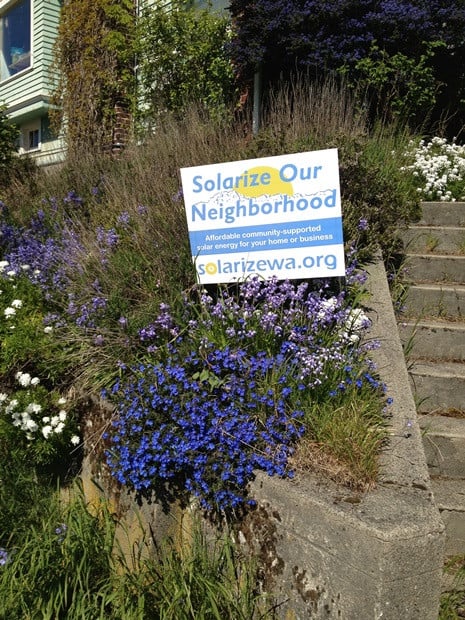With the cost of residential solar power systems dropping rapidly, more and more homeowners are considering installing a system on their own home. Yet the average homeowner spends two or three years considering solar. Why so long? Most homeowners face three major hurdles: potentially high upfront costs, too much complexity, and just plain old inertia.

Seattle homeowners Bruce and Mary Davis thought about solar even longer than average. “For the last ten or fifteen years, we’ve watched solar power, but with all these new technologies, what wasn’t clear was whether there’d be generational improvements,” Bruce said. “We’d looked at it a couple times, but it was always really expensive.”
The long delay has real costs. Many government incentives for installing solar power systems have expiration dates—most notably the 30% federal tax credit, which is set to expire at the end of 2016. In states that pay you for each kWh produced, it pays to start producing early, so that you receive the incentives for as long as possible. And of course, there are environmental costs when you delay switching to renewables.
If you’re thinking about installing a solar power system but are worried about the costs, help is out there. A program called Solarize helps homeowners overcome hurdles and shorten the timeframe to two or three months.
Solarize campaigns use the power of neighbor-to-neighbor organizing to streamline the process of going solar and secure a discount from market rates. Neighbors learn about solar by attending workshops, then organize a group purchase from a local solar installation contractor. By working together, homeowners cut out the time-consuming individual bid process and, by giving the contractor a large block of educated customers, usually secure a discount for the whole group. Solarize was developed in Portland in 2009, and proved so popular and effective there that the idea has spread across the nation.
A Solarize campaign helped give Bruce and Mary that final push they needed. When they attended one of the free workshops, Mary said, “Everything they said was exactly what we wanted to know,” from the clear explanation of tradeoffs between different solar power system options to the financial analysis showing total costs and projected payoff time.

Equipped with all this knowledge, they went ahead and withdrew some of their retirement savings to sign a contract for a 3.8 kilowatt system. Braving the worst of Seattle January, the contractor set up Bruce and Mary’s system.
“We’re big recyclers, we grow a lot of our own food in the garden, we drive hybrids,” Bruce said, but being able to see the source of their electricity, “helps me be aware of how much energy we’re using.” That awareness, and their commitment to efficiency, mean that they now have days where they produce more electricity than they use. With that kind of payoff, it’s not hard to understand why, in their words, “We recommend it to everyone we know.”
Interested in bringing Solarize to your neighborhood? Solarize is a grassroots model that anyone can organize, but it helps to have some guidance from those who have done it before. The Solarize Guidebook, authored by Seattle non-profit Northwest SEED for the National Renewable Energy Laboratory, shows communities how to organize their own Solarize Campaigns and is available for free. Northwest SEED also offers a Solarize U training for organizers in the Northwest.
About Jill Eikenhorst
Jill Eikenhorst coordinates Solarize and other education campaigns for Northwest Sustainable Energy for Economic Development, a Seattle-based non-profit that creates communities powered by locally controlled clean energy. As a condo owner, she participates in a community solar project in her neighborhood.
Note: This is a guest post; the views and opinions expressed are those of the author and do not necessarily reflect the opinion or position of Redfin.
Other popular posts:
1. How to Safely Observe Wildlife from Your Home
2. How to Create an Autism-Friendly Environment for Kids
3. How to Make Your Backyard a Sanctuary for Wildlife



























 United States
United States Canada
Canada